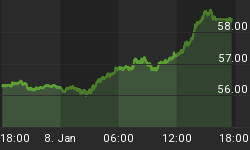Initial Claims did not administer the coup de grace to the bond market. While TIPS continued to struggle, bonds were roughly unchanged on the day as Claims came out quite near to expectations (421k). It does appear that 'Claims have begun a new slide to a lower level, but I would caution here against relying too much on one's eyes. The spike in late summer makes the slide appear larger than it really is, and moreover at this time of year (and, frankly, through most of January) the volatility of the Claims numbers is much higher. Ergo, we need more data to be sure that we're really seeing what we're seeing. I would say that I "suspect" it is so, but I don't have enough evidence yet to reject the null.
Absent such a mercy-strike, the market was reasonably quiet today. However, one of my favorite data releases - come to think of it, the fact that I have a favorite data release is pretty sad - was out today: the Federal Reserve's quarterly Z1 Flow of Funds report, updated through Q3. I like this report because it allows me to update charts like these:

This chart shows that Federal, State, and Local debt (including Fannie Mae and Freddie Mac debt) as a proportion of total debt. This matters because the higher this ratio goes, the bigger the incentive for the government to simply monetize the debt. It isn't outlandishly high yet, but the trend is kinda bad.

This chart makes a neat point. The private sector is deleveraging, slightly. But the overall economy is not, because the government has thoughtfully taken up the slack and borrowed whatever we weren't borrowing. This is not unrelated to the fact that the economy didn't collapse after 2008Q3. Some of you may applaud the Administration(s) for this since it helped avert an imminent collapse. Some of you may throw brickbats at the Administration(s), since if leverage was what was causing the collapse to threaten, we clearly have the same Sword of Damocles hanging over our heads. I tend towards the latter camp, but either way I think we can agree it's a smashing chart.

So where has the private deleveraging come from? Well, there is a myth that the consumer is deleveraging. A little bit, yes, but most of the deleveraging is coming from domestic financial institutions (banks, dealers, etc). And yes, you might combine these last two charts and say "so, the financial system basically foisted a bunch of debt onto the federal ledger, aka taxpayers?" Yep, that was the deal the Administration(s) made with the devil. Again, some of you will applaud this for the short-term results and others will hurl rotten tomatoes. But probably none of you will pat Bank of America on the back these days. (I'm just sayin'.)

Tobin's Q / Average Q
And, yes, the Z.1 allows us to calculate a variation of Tobin's Q. If you don't know what Tobin's Q is, you can read my comparatively-succinct explanation here, but in a nutshell it is a way of comparing the market value of equities to the replacement value of their assets. Higher means a frothier market. Here I've divided the calculated Q by the average Q since 1952 to get a normalized Q. If this makes you think the stock market may still be overvalued, then you can thank Q. You're welcome!
















